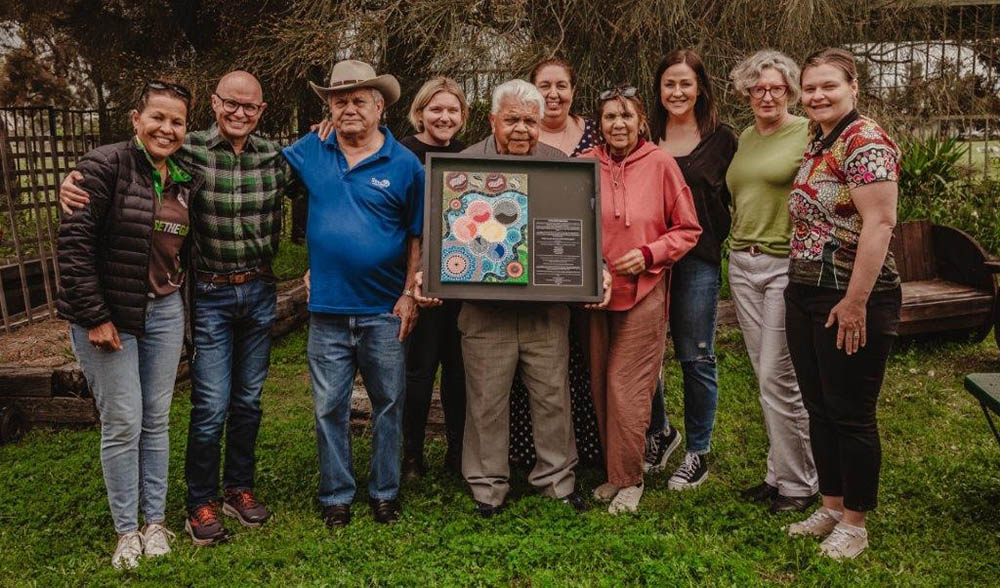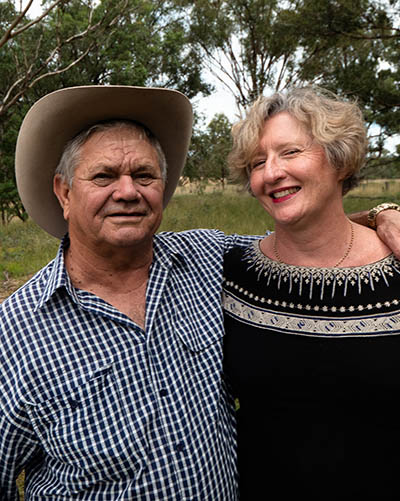Rural innovation: Supporting Aboriginal community-led stroke education
To celebrate the 10th anniversary of the ACI’s Rural Health Network (RHN), we’re revisiting some past winners of the network’s Rural Innovation Awards to learn how their projects have made a lasting impact and how the network has made a difference along the way.
Rachel Peake is the Stroke Care Coordinator, Peel and Mehi Sector, Hunter New England Local Health District working out of Tamworth Hospital. She has been a member of the RHN for 10 years and was part of the team behind the 2017 ACI Rural Health Innovation award-winning project Participatory Action Research (PAR) to Guide Aboriginal Health Resources (Written by the Mob for the Mob).
The project was led by Aboriginal people from Tamworth, Narrabri, Moree, Toomelah and Coledale communities living on Gomeroi/Gamilaraay country.
Learn more about Stroke: Written by the Mob.

Explain a little about your project and your role?
The project demonstrated an innovative approach to the development of health resources for Aboriginal and Torres Strait Islander communities, by sharing information, supporting and educating the community about stroke. The community produced their own unique stroke education resource, which has generated pride for the community.
Stroke knowledge was shared through stories, artwork and photos by community members. The analogy of the river used by the elders was understood and embraced by the wider Gamilaraay community. The river represents the blood vessels and, more powerfully, as it flows downstream, the linking of the communities of the Gamilaraay people.
My role in the project was to listen and learn from the Aboriginal community. As the facilitator, I helped bring together key people from the Aboriginal community and mainstream health in a culturally safe way to learn from one another.
How has the project evolved since your win?
The original project, its findings and the trusted relationships fostered with the community were integral elements of two successful grant applications from the Stroke Foundation Early Career Research Grant and the Medical Research Future Fund. This sponsorship has enabled the most recent community-led project, Yarning Up After Stroke, working within the Tamworth and Quirindi areas to develop and test a culturally appropriate stroke recovery self-management tool.
The team has been able to build their own trusted relationships with the community; to yarn about their stroke recovery experiences, and learn from and understand community identified solutions to current challenges in stroke recovery care. Yarning up After Stroke will be one of the first stroke projects to employ community-determined, culturally appropriate patient-reported outcome measures in stroke care.
What was the impact of the project for consumers and the health system in your region?

The project showed that education alone is not enough to engage communities. Establishment of trust and respect through community engagement occurred over a 12-month period prior to research. Aboriginal communities need to be involved in all aspects of their healthcare decisions to drive health promotion and literacy, based on their local culture and belief system.
The project also highlighted the benefits of engaging Aboriginal colleagues and students. Their involvement opened doors to the Aboriginal communities. Staff listened and identified their priorities, working with the community to put the content together, acting as advocates and ensuring the message was interpreted correctly.
The book Written for the Mob by the Mob was developed as part of the project, addressing stroke prevention, and stroke symptom recognition and management. Forty Aboriginal people contributed to the book, including school students, and people who have had a stroke and their families. They were able to define the key health messages related to stroke based on their own interpretation, and have since become mentors in their communities.
How has the RHN supported you in your work?
Working as a rural clinician can be isolating and restrict exposure to other people’s expertise and innovation. The Rural Health Network has brought rural Stroke Care Coordinators together to be a part of a supportive professional network.
The network focuses on improving health outcomes for our rural patients and supporting multidisciplinary staff to deliver evidence-base stroke care in rural areas.
The RHN gives rural clinicians a voice, and a seat at the table to be able to improve health outcomes for their patients.
What is the most rewarding part about being a rural health practitioner?
Working with stroke patients, their families and rural staff to improve access to high quality stroke care. Also looking at innovative ways to overcome the challenge of providing access to time-critical treatments and patient follow-up, in the face of distance and limited resources; and establishing working relationships with a statewide network of neurologist and stroke experts across a multidisciplinary team.
Find out more or join the Rural Health Network